
University Park is a city in Dallas County, Texas, United States, in suburban Dallas. The population was 25,278 at the 2020 census. The city is home to Southern Methodist University.

Sidney Sussex College is a constituent college of the University of Cambridge in England. The College was founded in 1596 under the terms of the will of Frances Sidney, Countess of Sussex (1531–1589), wife of Thomas Radclyffe, 3rd Earl of Sussex, and named after its foundress. In her will, Lady Sidney left the sum of £5,000 together with some plate to found a new College at Cambridge University "to be called the Lady Frances Sidney Sussex College". Her executors Sir John Harington and Henry Grey, 6th Earl of Kent, supervised by Archbishop John Whitgift, founded the Protestant College seven years after her death.

Arts Centre Melbourne, originally known as the Victorian Arts Centre and briefly called the Arts Centre, is a performing arts centre consisting of a complex of theatres and concert halls in the Melbourne Arts Precinct, located in the central Melbourne suburb of Southbank in Victoria, Australia.
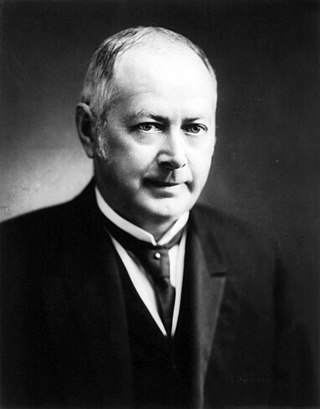
Albert Sidney Burleson was a progressive Democrat who served as United States Postmaster General and Representative in Congress. He was a strong supporter of William Jennings Bryan and Woodrow Wilson and so Wilson appointed him to the cabinet role heading the US Post Office. He expanded parcel post, rural free delivery, and air mail service. After America entered World War I in 1917, he stopped the mail delivery of anti-war publications and clamped down on free speech, actions that have been heavily criticized ever since.
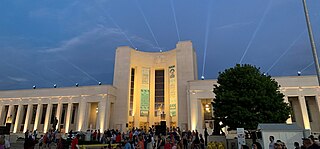
The Hall of State is a building in Dallas's Fair Park that commemorates the history of the U.S. state of Texas and is considered one of the best examples of Art Deco architecture in the state. It was designed and built for the Texas Centennial Exposition.

Massey Hall is a performing arts theatre in Toronto, Ontario, Canada. Opened in 1894, it is known for its outstanding acoustics and was the long-time hall of the Toronto Symphony Orchestra. An intimate theatre, it was originally designed to seat 3,500 patrons, but after extensive renovations in the 1940s, it now seats up to 2,765. It has an extensive history of concerts by artists of many musical genres which continues today.
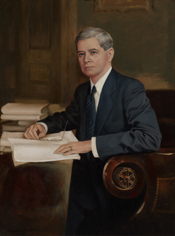
James Paul "Buck" Buchanan served as U.S. Representative from the 10th district of Texas from 1913 until his death on February 22, 1937.

Franzisca Bernadina Wilhelmina Elisabeth Ney was a German-American sculptor who spent the first half of her life and career in Europe, producing portraits of famous leaders such as Otto von Bismarck, Giuseppe Garibaldi and King George V of Hanover. At age 39, she immigrated to Texas with her husband, Edmund Montgomery, and became a pioneer in the development of art there. Among her most famous works during her Texas period were life-size marble figures of Sam Houston and Stephen F. Austin, commissions for the Texas State Capitol. A large group of her works are housed in the Elisabet Ney Museum, located in her home and studio in Austin. Other works can be found in the United States Capitol, the Smithsonian American Art Museum, and numerous collections in Germany.

Armadillo World Headquarters was an influential Texas music hall and beer garden in Austin at 5251⁄2 Barton Springs Road – at South First Street – just south of the Colorado River and downtown Austin. The 'Dillo flourished from 1970 to 1980. The structure that housed it, an old National Guard Armory, was demolished in 1981 and replaced by a 13-story office building.

Pompeo Luigi Coppini was an Italian born sculptor who emigrated to the United States. Although his works can be found in Italy, Mexico and a number of U.S. states, the majority of his work can be found in Texas. He is particularly famous for the Alamo Plaza work, Spirit of Sacrifice, a.k.a. The Alamo Cenotaph, as well as numerous statues honoring Texan figures, such as Lawrence Sullivan Ross, the fourth President of Texas A&M University.

The Texas State Cemetery (TSC) is a cemetery located on about 22 acres (8.9 ha) just east of downtown Austin, the capital of the U.S. state of Texas. Originally the burial place of Edward Burleson, Texas Revolutionary general and vice-president of the Republic of Texas, it was expanded into a Confederate cemetery during the Civil War. Later it was expanded again to include the graves and cenotaphs of prominent Texans and their spouses.
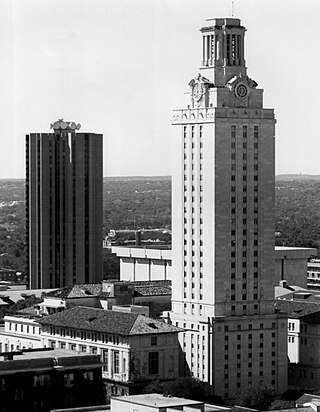
The Main Building is a structure at the center of the University of Texas at Austin campus in Downtown Austin, Texas, United States. The Main Building's 307-foot (94 m) tower has 27 floors and is one of the most recognizable symbols of the university and the city.
University of Nashville was a private university in Nashville, Tennessee. It was established in 1806 as Cumberland College. It existed as a distinct entity until 1909; operating at various times a medical school, a four-year military college, a literary arts college, and a boys preparatory school. Educational institutions in operation today that can trace their roots to the University of Nashville include Montgomery Bell Academy, an all-male preparatory school; the Vanderbilt University Medical School; Peabody College at Vanderbilt University; and the University School of Nashville, a co-educational preparatory school.

Oakwood Cemetery, originally called City Cemetery, is the oldest city-owned cemetery in Austin, Texas. Situated on a hill just east of I-35 that overlooks downtown Austin, just north of the Swedish Hill Historic District and south of Disch-Falk Field, the once-isolated site is now in the center of the city.
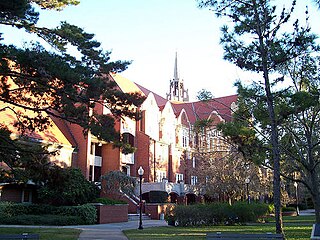
The University Auditorium, originally known as the Memorial Auditorium and sometimes called the University of Florida Auditorium, is a historic building on the campus of the University of Florida in Gainesville, Florida, in the United States. It was designed by William Augustus Edwards in the Collegiate Gothic style and was built between 1922-1924. It was restored and expanded in 1977 by architect James McGinley. The expansion, which added a new entrance and lobbies, was designed to complement but not match the original architecture. It is a contributing property in the University of Florida Campus Historic District which was added to the National Register of Historic Places on April 20, 1989. On April 18, 2012, the AIA's Florida Chapter placed University Auditorium on its list of Florida Architecture: 100 Years. 100 Places.

The University of Texas Performing Arts Center (PAC) is a collective of five theaters operated by The University of Texas at Austin, College of Fine Arts. The theaters are the Bass Concert Hall, McCullough Theater, Bates Recital Hall, B. Iden Payne Theater and Oscar Brockett Theater. Theaters range in size from the Oscar G. Brockett Theater, which has 244 seats, to the Bass Concert Hall, which seats 2,900. In addition to the theaters, the PAC also has offices and meeting rooms, rehearsal spaces and shops which are located in the PAC building and across the campus. PAC provides students an opportunity to interact with professionals in staging events and performing arts and extends an opportunity to the surrounding community to participate in all-age programs.

The Administration Building is a structure on the campus of Texas Tech University in Lubbock, Texas. It was one of the original buildings on the campus, and is modeled after the Universidad de Alcala de Henares in Alcalá de Henares, Spain. The Admin building has three floors and a basement and includes twin bell towers, double wings, and a courtyard. Some of the offices housed in the building include the Chancellor's Office, President's Office and Board of Regents Office.

O. Henry Hall, formerly known as the U.S. Post Office and Federal Building, is a historic courthouse and post office in Austin, Texas. It is located within the Sixth Street Historic District in Downtown Austin. O. Henry Hall serves as the administrative headquarters of the Texas State University System (TSUS), and until 2017 served as the University of Texas System headquarters.

Albert Sidney Johnston is a memorial statue of General Albert Sidney Johnston by German American sculptor Elisabet Ney. The piece is a life-size recumbent male figure rendered in marble sculpture. It depicts the General at the time of his death in the Battle of Shiloh during the American Civil War. Completed in 1903, the piece resides atop Johnston's tomb in the Texas State Cemetery in Austin, Texas, where it was installed in 1905.


















